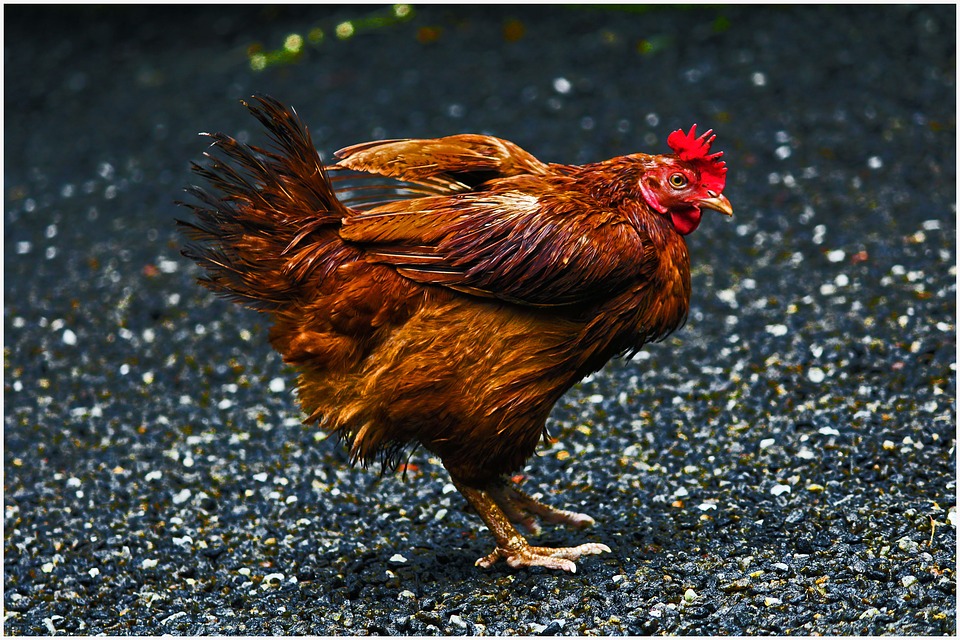
Introduction:
In the ever-evolving landscape of food technology, lab-grown meat and chicken are making waves. These innovative products promise the taste, texture, and nutritional value of traditional meat without the ethical and environmental concerns associated with animal farming. But as they inch closer to our dinner plates, a pressing question emerges: Can lab-grown meat and chicken truly be considered vegan? This article delves deep into this debate, offering insights, perspectives, and a comprehensive exploration of this groundbreaking intersection of science and ethics.
Understanding Lab-Grown Meat & Chicken:
The Science Behind the Meat: At its core, lab-grown meat, whether it’s beef or chicken, is cultivated from animal cells. These cells are typically obtained painlessly from a live animal and then nurtured in a nutrient-rich medium, allowing them to multiply and grow. Bioreactors, which can be likened to high-tech incubators, provide the ideal environment for these cells to develop into muscle tissues, fats, and other components of meat.
A Step Beyond Traditional Farming: Unlike traditional farming, lab-grown meat production doesn’t involve raising animals for slaughter. This means no feedlots, no slaughterhouses, and no concerns about animal welfare during the rearing process. The result? Meat that’s produced with significantly reduced harm to animals.
Taste, Texture, and Nutritional Value: Early adopters and taste-testers often report that high-quality lab-grown meat is virtually indistinguishable from its traditionally farmed counterpart. As the technology matures, we can expect even more refined products that cater to diverse culinary preferences, from steaks to chicken wings.
The Vegan Ethos: A Quick Refresher:
Beyond Just a Diet: Veganism, at its heart, is more than just a dietary choice. It’s a philosophy rooted in the principle of causing no harm to animals. Vegans abstain from consuming animal products, not just because of health or environmental concerns, but primarily due to ethical reasons. The idea is to minimize exploitation and harm to sentient beings.
The Ethical Stance: For many vegans, the decision to exclude meat, dairy, and other animal products stems from a deep-seated belief in animal rights. They argue that animals, much like humans, have the right to live without suffering and exploitation. This perspective extends beyond food to other areas like clothing, entertainment, and more.
Environmental and Health Considerations: While ethics play a central role, many vegans are also motivated by the environmental degradation caused by animal agriculture, from deforestation to greenhouse gas emissions. Additionally, a plant-based diet is often associated with numerous health benefits, including reduced risk of chronic diseases.
Reasons Why Lab-Grown Meat Might Align with Veganism:
A Cruelty-Free Alternative: One of the most compelling arguments in favor of lab-grown meat is its potential to drastically reduce, if not eliminate, the need for animal slaughter. For vegans, who prioritize the welfare of animals, this presents a significant ethical advantage. By producing meat without the associated cruelty, lab-grown options could align with the core vegan principle of “do no harm.”
Addressing the Environmental Crisis: Animal agriculture is a leading contributor to environmental degradation, from deforestation to water pollution and greenhouse gas emissions. Lab-grown meat promises a more sustainable alternative. Early studies suggest that producing meat in labs could reduce land use by up to 90% and water use by up to 70%. For eco-conscious vegans, this presents a compelling reason to consider lab-grown options.
Potential to Feed the World: With the global population set to reach nearly 10 billion by 2050, finding sustainable ways to feed everyone becomes paramount. Lab-grown meat could be a solution. It can be produced in controlled environments, irrespective of climate conditions, ensuring a consistent and potentially limitless supply. For vegans concerned about global food security, this is a point worth pondering.
Customization and Health Benefits: Beyond the ethical and environmental considerations, lab-grown meat offers potential health advantages. Since it’s produced in controlled settings, there’s a reduced risk of diseases like E. coli or salmonella. Furthermore, it’s possible to customize the nutritional profile of lab-grown meat, potentially reducing unhealthy fats and enhancing beneficial nutrients.
The Vegan Dilemma: Concerns and Counterarguments:
The “Naturalness” Debate: A common concern among some vegans is the perceived “unnatural” aspect of lab-grown meat. While it might be cruelty-free, there’s a debate about whether consuming meat produced in a lab aligns with the idea of consuming natural, whole foods.
Initial Cell Sourcing: While lab-grown meat reduces the need for slaughter, the initial cell samples are typically sourced from live animals. This raises ethical questions for some vegans. Is it acceptable to use animal cells, even if it leads to a significant reduction in animal suffering in the long run?
Economic Implications: The rise of lab-grown meat could have profound economic implications, particularly for those involved in traditional animal farming. The potential loss of livelihoods is a concern that some vegans share, emphasizing the need for a just transition for farmers.
The Purity Perspective: For some vegans, the idea of consuming any form of animal product, whether traditionally farmed or lab-grown, is a non-starter. This perspective is rooted in a purist approach to veganism, where any animal-derived product is off the table.
Plant-Based vs. Lab-Grown: A Comparative Analysis:
Taste and Culinary Experience: While plant-based alternatives like tofu, tempeh, and seitan have been staples in vegan diets for years, newer innovations like the Beyond Burger or Impossible Burger aim to replicate the taste and texture of meat. Lab-grown meat, on the other hand, is actual meat at the cellular level, promising an authentic taste. The question remains: Can lab-grown meat offer a superior culinary experience compared to plant-based alternatives?
Nutritional Profile: Plant-based meats are often fortified with essential nutrients like B12, iron, and protein to match the nutritional value of traditional meat. Lab-grown meat, being real meat, naturally contains these nutrients. However, the ability to tweak and customize the nutritional content of lab-grown meat might give it an edge in the future.
Environmental Footprint: Both plant-based and lab-grown meats tout their environmental benefits over traditional animal farming. While plant-based meats reduce the need for land, water, and resources, lab-grown meats can achieve similar, if not better, reductions, especially as the technology matures.
Cost and Accessibility: As of now, lab-grown meat is still in its nascent stages, making it relatively more expensive. Plant-based alternatives, having been in the market longer, have seen price reductions over time. However, as production scales and technology advances, lab-grown meat prices are expected to drop, potentially making it as accessible as plant-based options.
Consumer Perception and Acceptance: While plant-based meats have gained significant acceptance, especially among vegans and vegetarians, lab-grown meats are still a novelty. Their acceptance will hinge on factors like taste, safety assurances, and effective marketing.
Peering into the Future: Lab-Grown Products in a Vegan World:
The Potential Mainstream Acceptance: As technology advances and production costs decrease, lab-grown meat and chicken could become household staples. This section will explore the trajectory of lab-grown products and their potential to reshape the culinary landscape.
Regulations, Labeling, and Transparency: With the rise of lab-grown products, there will be a need for clear regulations and labeling. How will these products be classified? Will they carry a “vegan” label, or will a new category emerge? This section delves into the regulatory challenges and the importance of transparent labeling for informed consumer choices.
Collaborations and Innovations on the Horizon: The lab-grown meat industry offers opportunities for collaborations between scientists, chefs, and vegan advocates. From gourmet lab-grown dishes in high-end restaurants to partnerships with vegan influencers, this section will highlight potential collaborations and innovations that could shape the future of food.
The Broader Implications for Veganism: Will lab-grown meat strengthen the vegan movement by offering more cruelty-free choices, or will it create divisions within the community? This section will explore the broader implications of lab-grown products for the future of veganism.
FAQ Section:
- What exactly is lab-grown meat? Lab-grown meat, also known as cultured or cell-based meat, is produced by cultivating animal cells in a controlled environment. This process eliminates the need for traditional animal farming and slaughter, resulting in meat that’s biologically identical to its conventionally-produced counterpart.
- How does the taste of lab-grown meat compare to traditional meat? Early taste tests and reviews suggest that high-quality lab-grown meat is virtually indistinguishable from traditionally farmed meat in terms of taste and texture. As the technology matures, we can expect even more refined products that cater to diverse culinary preferences.
- Is lab-grown meat environmentally friendly? Preliminary studies indicate that lab-grown meat has the potential to significantly reduce the environmental impact associated with traditional animal farming. This includes reductions in land use, water consumption, and greenhouse gas emissions. However, the exact environmental footprint will vary based on production methods and scale.
- Why is there a debate about lab-grown meat among vegans? While lab-grown meat offers a cruelty-free alternative to traditional meat, some vegans raise concerns about its “naturalness” and the initial sourcing of animal cells. The debate centers around whether lab-grown meat aligns with the core vegan principle of consuming natural, whole foods and causing no harm to animals.
- Are there health benefits to consuming lab-grown meat over traditional meat? Lab-grown meat is produced in controlled environments, reducing the risk of diseases like E. coli or salmonella. Additionally, there’s potential to customize its nutritional profile, potentially reducing unhealthy fats and enhancing beneficial nutrients. However, comprehensive studies are needed to fully understand its health implications.
- How soon can we expect lab-grown meat to be widely available? Several companies are in advanced stages of research and production, with some aiming to launch their products in select markets within the next few years. Widespread availability will depend on regulatory approvals, production scalability, and market demand.
- Will lab-grown meat be affordable? Initially, lab-grown meat might be priced at a premium due to production costs. However, as technology advances and economies of scale come into play, prices are expected to drop, potentially making lab-grown meat as affordable as, if not more so than, traditional meat.
Conclusion:
The intersection of lab-grown meat and veganism is a complex and evolving topic. As we stand at the cusp of a potential food revolution, it’s essential to approach the subject with an open mind and a willingness to adapt. Whether you’re a staunch vegan, a curious omnivore, or somewhere in between, the rise of lab-grown meat challenges us to reconsider our food choices and the ethics behind them. As we’ve explored in this article, there are compelling arguments on both sides. The future of food is unfolding, and it promises to be as delicious as it is thought-provoking.
Blog Tags: Lab-Grown Meat, Vegan Debate, Cultured Meat, Food Technology, Future of Food, Ethical Consumption, Environmental Impact, Veganism and Lab Meat, Cell-Based Meat, Culinary Innovation.













